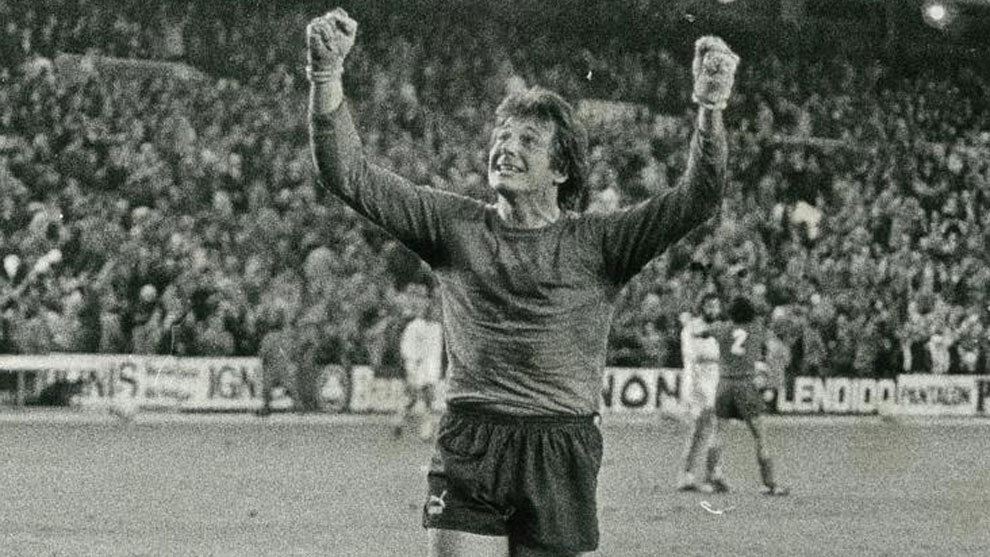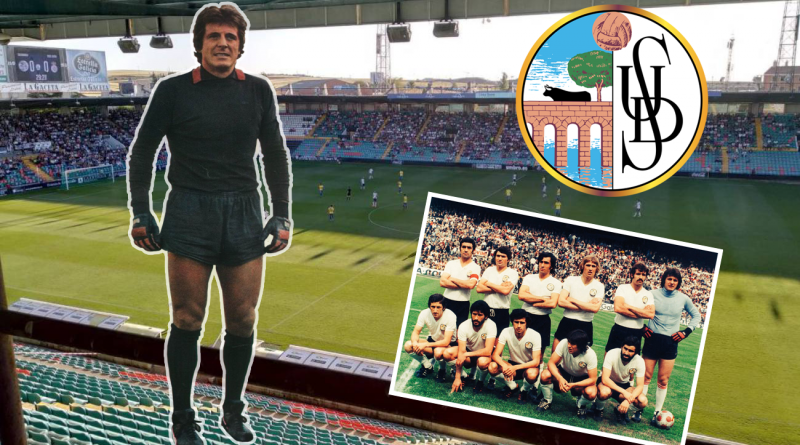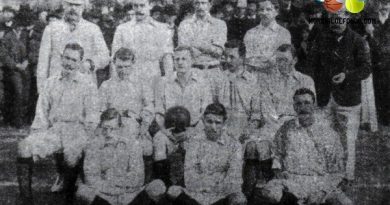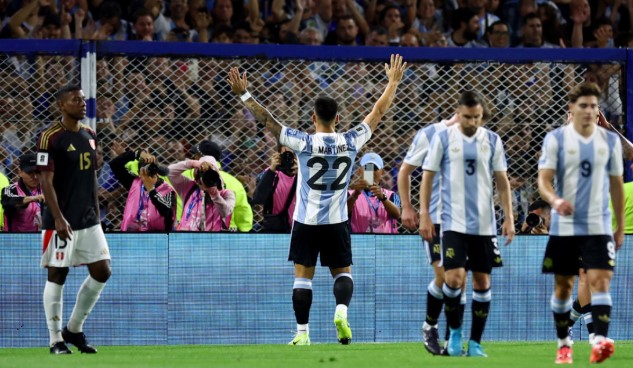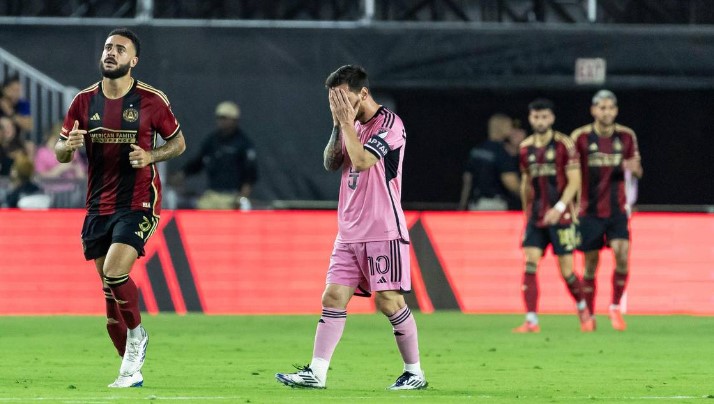THE JUSTICE GOAL
Vindication for a team, recognition for a goalkeeper… Reward for a city: Salamanca
By Jonatan Fabbian (ARTICLE IN SPANISH)
When the Estadio Hermántico’s doors were close on 19 May, 2013, nobody thought it would be the Unión Deportiva Salamanca’s last official match they would watch. At that game, on the final matchday of the Spanish Third Division, the Salamanca fans celebrated the last two goals scored by their team, facing Tenerife, the leader. The result was a 2-2 draw for the “Spanish Second Division B”, which gave the team from Islas Canarias the boarding pass to “Second Division A”. By contrast, for the ones from Salamanca it was, unknowingly, the end of the club’s history. They thought that bitter home draw only meant to be out of the “Copa del Rey” and the closure of a poor season. However, one month later, on 18 June, 2013, the Unión Deportiva Salamanca was dissolved by a court order. That sorrowful day, the Charra institution turned its lights out after 90 years of existence, saddled with a heavy burden of debt accumulated while playing the Third Division.

Long gone are the glory and excitement times lived four decades before, in the 1974-75 season, when los Charros made their first appearance in the First Division, walking on a path that placed them as a strong and revolutionary team up to the end of the 70’s. In those first steps in the highest category of Spanish football, Unión Deportiva Salamanca ended the tournament in seventh place and with the least goals conceded, an incredible record for a club that was just bursting onto the scene in elite Spanish football in a 34-round competition. Such a great achievement was possible due to the effort of a whole team that was at its best and most especially an Argentinian goalkeeper who stood out as a shining star from beginning to end: Jorge D’Alessandro.
The goalkeeper arrived almost unexpectedly in the institution from Salamanca along with the defender Ricardo Rezza, Argentinian as well. They both landed in the Iberian peninsula from San Lorenzo de Almagro after catching the eye of the managers during a tour of the traditional Buenos Aires team in Europe. This stop was undescheduled, but the team ended up training for a week in the Unión Deportiva Salamanca premises. Fate charted a special course to turn them into strongholds of the football history of the institution. “We arrived in Spain when the doors were just being opened again to foreigners. Johan Cruyff was in Barcelona, Mario Kempes was in Valencia, Günter Netzer in Real Madrid… and in Salamanca, two real strangers: Rezza and D’Alessandro. During a tour in Italy and Spain, we trained for a week in the Salamanca sports facilities, we played at a very high level and they signed us. So our eventually successful adventure with Ricardo in a newly promoted team was like a science fiction movie. It was unbelievable. It was like tearing down a wall with a sling”, Jorge D’Alessandro recounted in great detail in a table talk in Madrid, 45 years later.
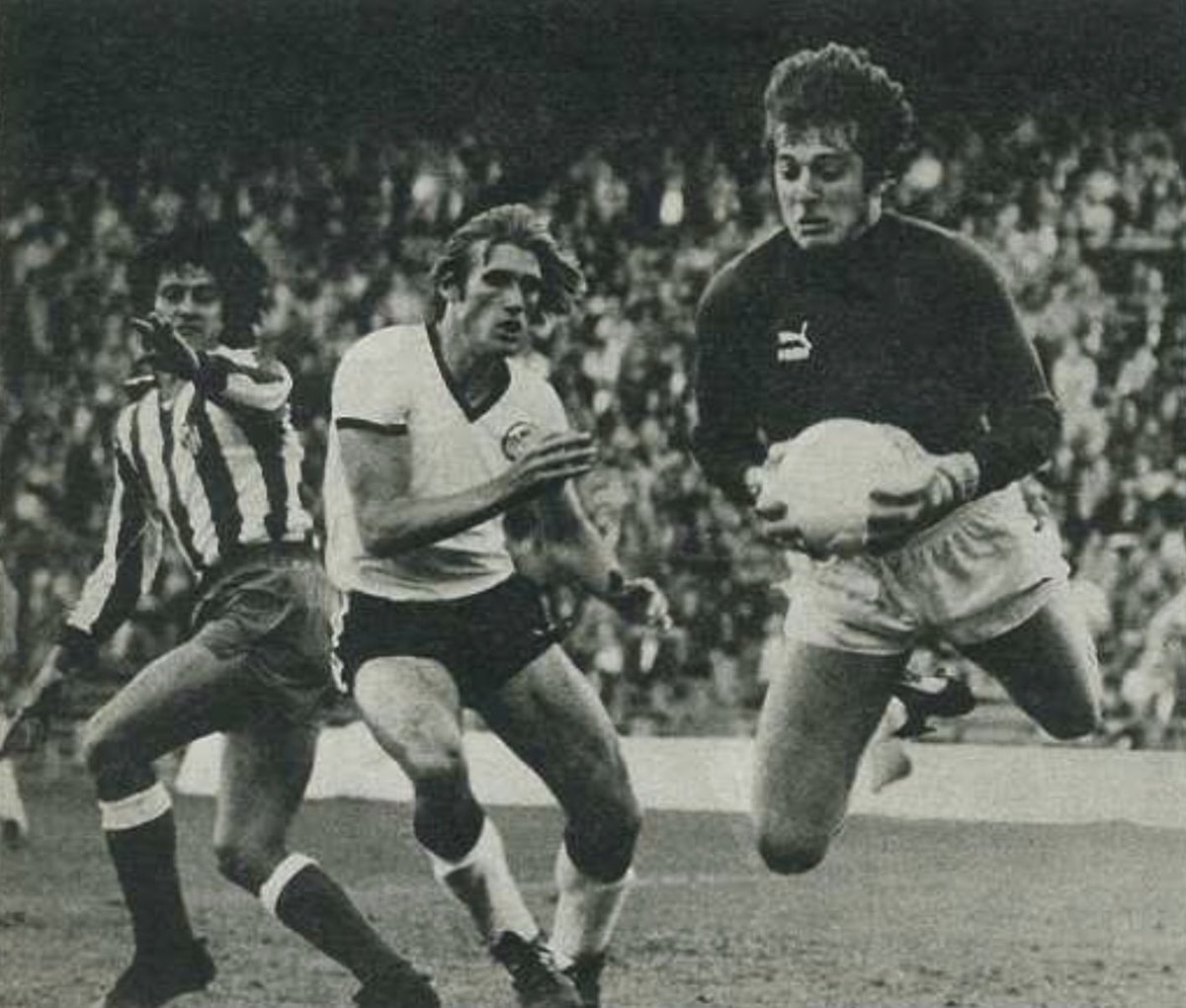
“We played in a very tough 18-team league, where I was untouchable in Salamanca and enjoyed facing outstanding figures such as Cruyff and Paul Breitner -the ex-goalkeeper emphasizes-. It was about the end of the country’s bloody time, when the Spanish league was categorically selective and foreign players occupied quota. People do not realize what Franco’s Spain was indeed. The Spain of fears, the Spain of complexes and the Spain of “dignified defeat”. That is why it is important to understand the extent of what I am telling you: many walls had to be torn down”.
For the fans of the most important team in Salamanca it was a dream season, the beginning of the most glorious years of the club in Spanish football; and they proved it when it came to supporting and encouraging the team at the Estadio Helmántico.
Rezza, the dazzling black and white central defender who joined him those years, recalls it: “The relationship with the people of Salamanca was wonderful, there were beautiful moments, the fans were very excited for the good level of their team, which was a beginner in the First Division. It kept on as the revelation team of the tournament in the first half of the table. There is an anecdote that pictures it: I remember that on the second matchday we received Real Madrid and the support from Salamanca people was so huge, that they had to place chairs behind the advertising posters on the field of the Estadio Helmántico, because the capacity of almost 20 thousand people was not enough. It was amazing!”.

That memorable performance by Unión Deportiva Salamanca in the most important category of Spanish football, being the team with the least goals conceded in the season, was worthy of the Zamora Award for its goalkeeper. The honor was conferred to Salvador Sadurní, Barcelona goalkeeper in 1975. The prestigious sports newspaper Marca has awarded the Zamora trophy since 1959 the goalkeeper with the fewest goals, in the First and Second Division, of Spain. Its name pays tribute to Ricardo Zamora, the legendary Spanish goalie in the 1920s and 1930s.
Historical overview
“Desde mi grada vieja” is a blog created by a black and white fanatic who turned into a thorough researcher on his beloved team. His name is Ángel Martín Fuentes and he was decisive in the struggle to reach a deserved acknowledgement for his Charro club through photos, statistics and significant documents. Everything for the team he was, is and will always be a fan of, despite its institutional disappearance.
On his blog, Fuentes posted a set of solid information for his childhood idol, Jorge D’Alessandro, to get legitimate recognition with the awards that he deserved to be honored with in the time when he represented the black and white team. “He is the only goalkeeper in history who, having played all the games and having had the least defeated defense in the competition, did not get the Zamora award”, the historian pointed out with displeasure in 2011. That year, he published a very detailed research which unmistakably established that in 1975 and 1977 the Salamanca goalkeeper should have been the winner of two Zamora awards.
In the 1974-75 season, D’Alessandro was the best goalie in the Spanish League, accomplished a total of 34 appearances and 29 goals conceded. Even so, the Zamora award was bestowed upon Sadurní, since at the time the Marca newspaper’s regulations allowed to award the goalkeeper with the lowest average goals conceded, on the condition of playing more than 22 games.
Barcelona keeper received the prestigious trophy of the season with an average of 0.79 goals-per-match, having conceded 19 goals in the 24 matches. On his part, Salamanca goalkeeper was in second place, despite having played ten more games with an average of 0.85 goals-per-match; something irregular and unfair for a goalkeeper who had played all the games and, furthermore, when his team defense had been the least beaten of the season.
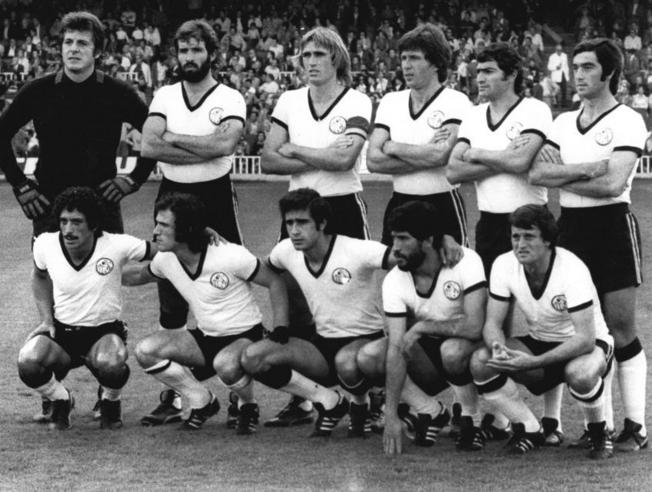
For such reasons, in the 1983-84 season with 18 teams in competition -as in 1974-75- Marca decided to increase the number of games played to a minimum of 28 to win the award. With this rule, more suitable for sporting merit, Sadurní would not have obtained the trophy because he did not take part in the 28 eligible games… Jorge D’Alessandro would have been fairly honoured with the Zamora award, since he played every minute of the league.
Later, in the 1976-77 season, the Argentinian goalkeeper appeared in 31 of the 34 matches of the tournament, playing them entirely and conceding 30 goals, for a 0.967 average to be worthy of his second Zamora award. Nevertheless, based on the official rules of the time the winner was Miguel Reina, Atlético de Madrid goalie, who took part in 30 games (29 complete and a 55-minute appearance in another one) and was beaten 29 times. Thus, according to those guidelines, the newspaper counted 30 games played and 29 goals conceded, which meant an average of 0,966 goals-per-match… A thousandth less than D’Alessandro! Again, Salamanca goalkeeper was unfairly ranked second behind the colchonero representative, who played 135 minutes less.
All of this took place under the award rules in 1977 -valid until 1983- which established that the winning goalkeeper had to play at least 22 league matches, but it neither specify the number of minutes that he had to be on the field in each game to calculate, nor define the decimals that would be necessary to settle the best in case of a tie.
Due to this exiguous difference, in 1977 Unión Deportiva Salamanca missed out on the distinction for its awesome goalkeeper once again. However, Marca in its modified rules in 1983, detailed: “The winner of the award will be the goalkeeper with the lowest average obtained up to the second decimal place (hundredths), resulting from dividing the goals conceded throughout the league (including those from non-computable matches) among the total of computable matches. A computable match is understood as one in which the goalkeeper plays a minimum of 60 minutes”.
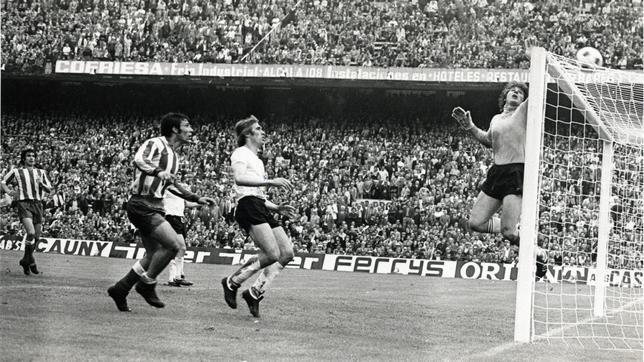
According to these adjustments, in 1976-77 Reina would only have counted 29 games instead of 30, since in the last one he played 55 minutes, which would not count as valid as he did not reach the 60 minutes required in the current regulations. Therefore, computing 29 matches with 29 goals conceded, the average would be of 1 goal-per-match; a higher percentage than the Argentinian goalkeeper, who played 31 complete games and finished the season with a 0.967 register.

Jorge D’Alessandro would have fairly won the Zamora award for the second time, an honour to showcase for the club. Even excluding the non-computable games item and focusing on the decimals, the trophy should be his anyway, because according to the 1983 rules, the tie on the first decimal place would have worked out for him, since he played more matches than Miguel Reina, as Marca has stated since then.
“The Zamora trophy is a significant prize. Imagine that in Argentina Gimnasia y Esgrima de Jujuy makes it to the First Division, plays its first season in that category, more than 30 games and has the least beaten goalkeeper. Unbelievable!”, D’Alessandro recounts thoroughly. His saves defending Salamanca revolutionized the Spanish league in the 1970s, although they were little known in Argentina.
The people from Salamanca never thought that their debutant team in the elite would have the least beaten goalkeeper; neither had they imagined that the last game of the 2013 season would be the sad end of their football history. Much less imaginable was that 45 years later, and with the institution already dissolved, they would receive the two most important trophies of Unión Deportiva Salamanca Salamanca’s 90 years of life.
Justice for the history of a club
“Honestly, this is a dream. Being able to reach such a high level of success due to the vindication born from the modesty of a simple fan bordered on the miraculous”, Ángel Martín Fuentes remarks. The history of his research and those memorable years of Unión Deportiva Salamanca is now a laureate one.
On December 16, 2019, at the award ceremony offered by the newspaper Marca in Madrid to the best players of the league every year, Jorge D’Alessandro received the Zamora trophies as the best goalkeeper of the 1974-75 y 1976-77 seasons.
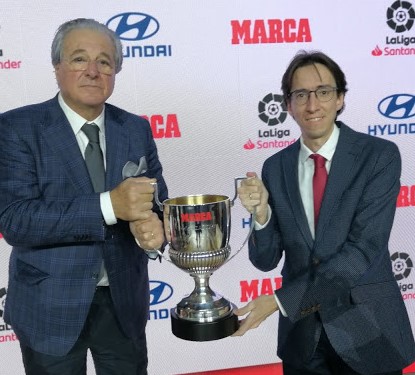
It was an act of justice from a media company rewarding the Argentinian goalkeeper with the two valuable awards that should have been his in those seasons when he stood out defending the Unión Deportiva Salamanca colors; and also a righteous act recognizing a fanatic’s well-grounded research.
Under the name “Las sombras del Zamora“, this research was republished and widened in 2019 with a call for Marca to review it. The Spanish newspaper yielded to his persistence, and Fuentes became almost another member of that team: “Personally, it was the conclusion of a life inexorably linked to these colors and my love for their past. Contributing indirectly to that recognition -but also directly because my name maybe comes out- has been the peak of my love for a club, unfortunately disappeared at present”.
D’Alessandro was recognized at the age of 70, when he is respected as former coach and famous sports commentator on “El Chiringuito”, the highest rated soccer television program in Spain. As he is a highly experienced footballer and a great storyteller, the interview turns into a kind talk between two Argentines in Madrid for more than an hour, taking advantage of the level of his background and his willingness to “save” all the questions like shots…
– You were coming to Salamanca, which was about to debut in the league. Was it crazy to think that you would play all the games in the first season and would end up being the least beaten goalkeeper?
-No doubt! But it happened… (he nods and laughs). It’s an award created for the greatest. Besides, we were newly promoted! We were 23 players, all debutants in the category. They brought us, (Ricardo) Rezza and I, and we had a great tournament. Ricardo was determining for the Zamora awards I received, he was off the charts, an exceptional player who had an amazing performance.
Imagine the context of that historical moment; I’ll explain it to you with an expression that was usually said here in Spain: “The dignified defeat”. A dignified defeat was what the small teams aimed to, playing away without being thrashed. They asked me: “Don’t let them score more than three goals!”. If we succeded on this, it meant that we had played fucking great. I replied wildly to them: “Let’s win this battle, guys!”
-I guess that with the mindset you brought from Argentina, the “dignified defeat” idea did not even cross your mind.
-Not a chance! I had been champion with San Lorenzo in four seasons. I started being part of Los Matadores del 68 squad. Along with the players on that team, we never considered the idea of losing. I came from a group where the only and most important thing was winning, and the players had that mindset. And I say again the other side of hearing “dignified defeat” … What an incredible phrase!
-That’s why the fact of having remained in the first half of the table for years with Salamanca is so magnified…
-There have been two very important things, we had a heart with great spirit and will. The will is a muscle that all people have hidden. Someone with the will to get up, the will to exercise, the will to study, the will to work … The will it is what powers everything!
-How did being a leader for so long at Unión Deportiva Salamanca mark you?
-What marked me here was responsibility. I found myself in an environment where the team was “handed over to me.” Rezza and I were assigned all responsibility. We never made a lineup with José Luís García Traid (team coach). The most remarkable things that we developed are two fundamental elements: will and heart. No other values are more important than those in life for me.

-What kind of goalkeeper were you?
-I am in the line of Antonio Roma, Amadeo Carrizo… The figure of the conventional classic goalkeeper like them emerged in Argentina. But like Menotti and Bilardo, there are two opposing models. Then the figure of Loco Hugo Gatti arose, who was not the pioneer in that modern style, the pioneer was Nestor Martín Errea, from Atlanta, and Gatti appeared afterwards. Then Carlos Biasutto and even Pato Fillol came out, who are mixed goalkeepers, who were between the conventional and the modern.
There is a story which tells that in the stands of the Estadio Helmántico a fan asks “Where is the Salamanca goalkeeper?”, and someone answers “Don’t worry, it’s that one standing outside the area”. I was ahead of that time, as I used to play a lot outside the area and anticipated. Maybe I was not as good at saving as I was at my intuitive ability. I was very rational. I started analyzing the game on Thursday before going to sleep, so by Sunday I had already played it seven times. If I was not good enough, if we were a shitty team and we were the least beaten… Something good there should be there! The secret was planning.
Unión Deportiva is gone, but the titles are for Salamanca
The city that is home to the oldest active university in Spain, the Universidad de Salamanca, founded in 1218, is now proud of the trophies achieved by a Salamanca football legend: the Argentinian ex-goalkeeper.
Last July 7 Jorge D’Alessandro donated the Zamoras to the city, as he had promised at the award ceremony by the newspaper Marca. A new memorable date for this magical story.
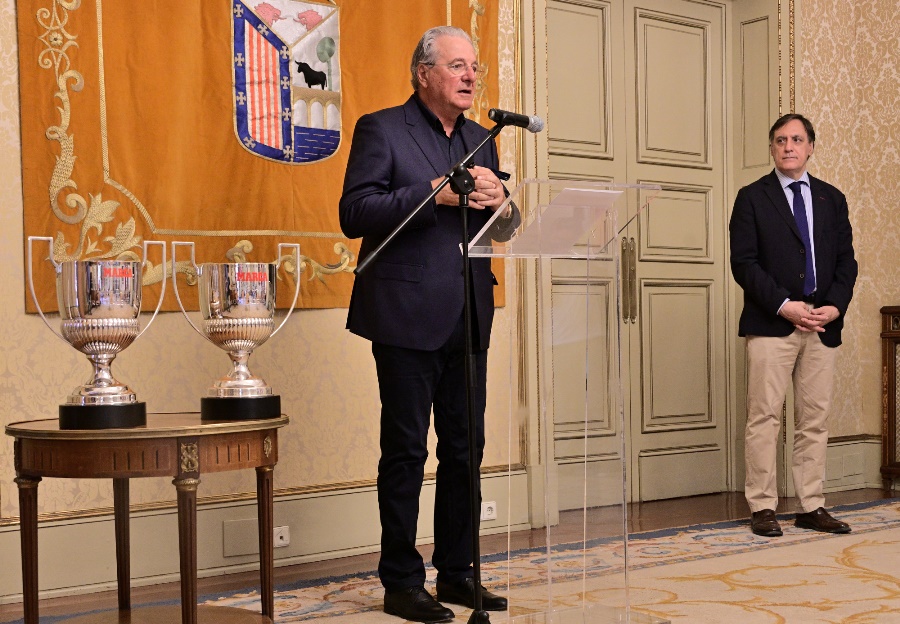
Unión Deportiva Salamanca no longer exists, but its only two trophies in First Division were placed in municipal custody in the Ayuntamiento de Salamanca reception hall. In a ceremony presided over by the Mayor Carlos García Carbayo, the Zamora awards were located in one of the corners of the room that hosts institutional events in the region.
“Jorge D’Alessandro already meant everything in the club and in Salamanca before these trophies. What the two awards bring about is recognizing him a place in the eternity of Spanish football history, equaling and surpassing highly prestigious goalkeepers who had been recognized. I was very happy for him, because he really deserved it, those records reached in a modest team, even newly promoted, as in the case of the first award, are from another galaxy and it was fair to conclude the history of the club with them, despite being already dissolved”, Ángel Fuentes accurately adds to this narrative.
Ricardo Rezza, who was at times the captain of those glorious years of the club, points out how difficult it was for him to transcend in football with his now awarded friend. Together they led a defensive fortress that has been exalted to the category of Salamanca legend: “It was a great honor because it was the least beaten team in its debut season in the Spanish First Division, with 34 matches. Something unheard-of! A few years ago I passed by the Estadio Helmántico, and I felt a mixture of nostalgia and sadness seeing that place empty after so many moments of euphoria full of fans. It was heartbreaking to know about the dissolution of the club, especially for the Salamanca fans. In the 1970s, the club sport complex used to be a familiar celebration venue on Saturdays and Sundays. Today it is a great memory and a fair award for that great Unión Deportiva team”.
D’Alessandro is currently the manager of grassroots football at the Santa Marta club in the city, where children are coached from an early age. He’s a symbol of Salamanca sport, there is a campus named after him: “Zona Deportiva Jorge D’Alessandro”.
The Zamora trophies that were recognized to him 45 years later regardless of the dissolution of the club, now deck out the Ayuntamiento de Salamanca. An honor that he humbly shared and handed over on July 7,2020 when he remarked: “These trophies are not mine, they belong to a whole team… And now to a city!”
¡The Justice Goal!
